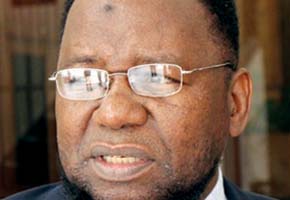Demand for extension services surges
Agriculture Sector Workshop held in Harare recently, Head of the Department of Agricultural Economics at the University of Zimbabwe, Dr Jacqueline Mutambara said several training colleges were established to meet the increasing demand for trained agricultural personnel.
“The UZ’s Faculty of Agriculture, for instance, was established to provide support to the development of agricultural technology and extension services,” Dr Mutambara said.
She said agricultural education at various levels was an intervention on human capital that was aimed at improving the quality of human resources to enhance their effectiveness in production. Education, said Dr Mutambara, was a driver in agricultural growth and development and enhanced human capabilities while interacting with all the other factors to bring growth and development in the agricultural sector. She said after the completion of the land reform Government realised the importance of education to agriculture in enhancing productivity.
It then embarked on a programme to increase the number of training institutions across the different geographical locations and space across Zimbabwe.
“This resulted in an increase in agricultural training colleges while the existing ones were expanded in capacity with training duration reduced to fast tracking of agricultural personnel to adjust to emerging situations.
“As a result a total of 11 universities, 13 colleges and 11 training centres were established for training at various levels,” she said. Universities that were opened after the land reform include Africa University, Bindura University, Midlands State University, Great Zimbabwe University, Women’s University in Africa, Lupane and Chinhoyi. Other institutions that came after the land reform are Magamba, Kaguvi, Chaminuka, Hlekweni and
Rural Friends training centres, to name just a few. Before independence smallholder farmers occupied 17,8 million hectares while the large-scale farmers were on 15,5 million hactres of prime land.
This then changed to 21,5 million hactares for the small-scale farmers and 11,8 million hactares for the large-scale after independence. And with the fast track resettlement programme, smallholder farmers took over 27,9 million hactares of land while the large-scale occupied 1,1 million hactares.
The agriculture sector has recorded positive growth after the land reform and the adoption of the Global Political Agreement though a lot still needs to be done. In 2010 agriculture accounted for 33,9 percent of the GDP, over 40 percent of the value of the country’s exports, 60 percent of raw materials for the agro-industry while it was the source of livelihood for 70 percent of the population.









Comments